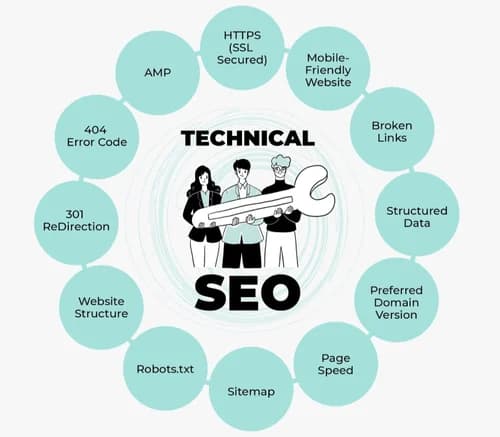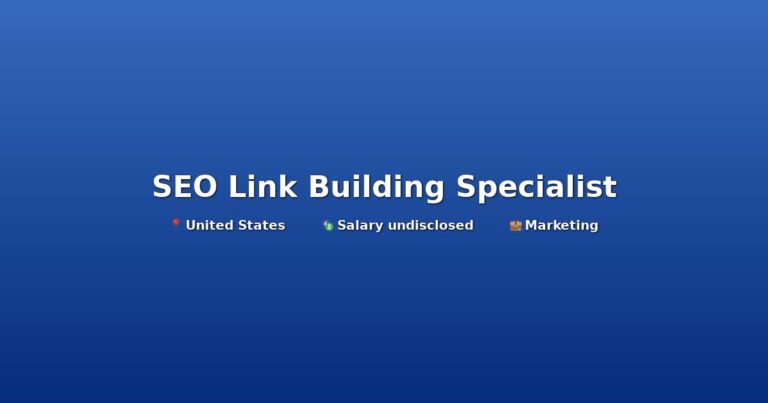Unlock the power of local SEO with our comprehensive local SEO checklist 2024 . Optimize your Google My Business listing. Build citations and earn backlinks. Follow these steps to win at local search. They will help you get more customers for your business. This is through optimizing Google My Business (GMB).
Google My Business (GMB) Optimization:
Optimizing your business’s presence on Google My Business (GMB) is crucial. It’s vital for local SEO success. Follow these steps:
-
Claim and Verify Your GMB Listing: First, claim your GMB listing if you haven’t already. This process involves verifying that you are the rightful owner or representative of the business.
-
Accuracy and Updates: Keep all information on your GMB listing accurate and up-to-date. This includes your business name, address, phone number (NAP), website URL, business hours, and any other relevant details.
-
High-Quality Images: Visual content is powerful in attracting potential customers. Upload high-quality images. They should show your business, including your storefront, interior, products, and team. Images should accurately represent your business and engage viewers.
Customer Reviews: Encourage satisfied customers to leave reviews on your GMB listing. Positive reviews not only enhance your credibility but also improve your local search rankings. Respond quickly to reviews. This applies to both positive and negative ones. It shows your commitment to customer satisfaction.
Local Keyword Research:
Finding the right keywords with local intent is essential. They are key for optimizing your website’s content. Here’s how to do it effectively:
-
Relevant Keywords: Find terms and phrases that your local audience is likely to use when searching for businesses like yours. Focus on long-tail keywords that include your location and specific services or products.
-
Location-Specific Terms: Use location-specific keywords naturally in your website content. Include them on your homepage, service pages, and blog posts. This helps search engines understand your business’s relevance to local searches.
On-Page SEO:
Optimizing your website’s on-page elements is fundamental for local SEO success. Follow these best practices:
-
Title Tags and Meta Descriptions: Create compelling title tags and meta descriptions for each page of your website. Use relevant local keywords. These elements appear in search engine results and influence click-through rates.
-
NAP Consistency: Include your business name, address, and phone number (NAP) prominently on every page of your website. Consistent NAP information helps search engines. It also helps customers find and contact your business.
Local Business Schema Markup:
Adding schema markup improves your website’s visibility in search results. It provides structured data about your business. Here’s how to do it:
-
Structured Data Markup: Add schema markup to your website. It gives search engines specific info about your business. This info includes its name, address, phone number, hours, and payment methods.
-
Local Business Schema: Use the Local Business schema type to mark up your business information. This makes it easier for search engines to understand and show relevant details in local search results.
Local Citations:
Building local citations helps establish your business’s online presence and credibility. Follow these steps:
-
NAP Consistency: Ensure your business’s name, address, and phone number (NAP) are the same across all online directories. This includes local business listings, review sites, and industry directories.
-
Directory Listings: List your business on local directories and citation sites. These include Google My Business, Yelp, Bing Places, Yellow Pages, and industry-specific directories. Complete each listing with accurate and detailed information.
Local Link Building:
Earning backlinks from local sources can significantly boost your website’s authority and visibility. Here’s how to do it effectively:
-
Local Partnerships: Find local businesses, organizations, and influencers to collaborate with. The partnerships should benefit both of you. Seek opportunities for guest blogging, co-marketing campaigns, or event sponsorships.
-
Community Engagement: Take part in local events. Sponsor local initiatives or support charities. This builds relationships with other businesses and groups in your community. Engage with local influencers and community leaders to earn mentions and backlinks.
Mobile Optimization:
With the increasing use of mobile devices, optimizing your website for mobile users is essential. Here’s how to ensure mobile-friendliness:
-
Responsive Design: Your website should be responsive. It should adapt seamlessly to different screen sizes and devices. Test your site’s mobile responsiveness using tools like Google’s Mobile-Friendly Test.
-
Page Speed: Speed up your page for mobile users. Do this by cutting unneeded elements, compressing images, and using browser caching. A fast-loading website improves user experience and reduces bounce rates.
Localized Content:
Creating local content helps you connect with your target audience. It also establishes your business as a valuable resource in the community. Here’s how to do it effectively:
-
Local Events and News: Publish content that highlights local events, news, and happenings. It should cover your area. Share insights, tips, and recommendations related to your industry and locality to engage with your audience.
-
Community Involvement: Showcase your involvement in the local community. This can be through sponsorships, volunteer work, or partnerships with local organizations. Highlight your contributions and support for community initiatives in your content.
Online Reviews Management:
Managing online reviews effectively can enhance your reputation and credibility among potential customers. Here’s how to do it:
-
Review Monitoring: Check customer reviews often. Look on platforms like Google My Business, Yelp, Facebook, and industry-specific sites. Respond quickly and professionally to both good and bad reviews. This shows your commitment to pleasing customers.
-
Review Generation: Encourage satisfied customers to leave positive reviews. Do this by providing great service and rewarding feedback. Make it easy for customers to leave reviews by including links or prompts on your website, email signatures, and social media profiles.
Social Media Presence:
Being active on social media lets you engage with your local community. It also helps you promote your business well. Here’s how to do it:
-
Platform Selection: Platform Selection Choose the social media platforms that matter to your audience and industry. Maintain active profiles on platforms like Facebook, Instagram, Twitter, LinkedIn, and Pinterest.
-
Engagement and Content Sharing: Share valuable content, updates, and promotions on social media. Do this to engage with your audience. Encourage interaction through likes, comments, shares, and direct messages. Respond promptly to inquiries and comments to foster positive relationships with your followers.
Local SEO Audit:
Regular audits of your local SEO help you find areas for improvement. They also let you track your progress over time. Here’s how to do it effectively:
-
Performance Tracking: Use tools like Google Analytics and Google Search Console. Also, use third-party SEO software to track your website’s performance. They measure key metrics like organic traffic, keyword rankings, and conversion rates.
-
Technical Analysis: Evaluate your website’s technical SEO. This involves site structure, URL structure, page speed, and mobile-friendliness. Identify and address any issues that may be affecting your website’s search visibility and user experience.
Monitor Competitors:
Watching your local competitors’ SEO strategies can give insights. It can help you find chances to stand out. Here’s how to do it effectively:
-
Competitive Analysis: Competitive Analysis is about analyzing your competitors’ websites and content. You also look at their backlinks and social media to see their strengths and weaknesses. Identify gaps or areas where you can outperform them in local search results.
-
Differentiation: Differentiation is key. Use your findings to set your business apart. Make unique selling points that appeal to your target audience. Focus on providing exceptional value. Also, offer personalized experiences and great customer service. This will help you stand out in your local market.
Follow this Local SEO Checklist for 2024 . Always optimize your local SEO. Doing so can improve your online visibility, attract more local customers, and grow your business. Remember to track your progress. Adapt to changes in search. Stay engaged with your local community. This will keep you competitive.
Maximize your local online visibility with our comprehensive local SEO checklist 2024 provided by Bitcodesolution which Enhance your Online Presence boosts your business with super-smart software solutions, making innovation and growth a breeze. We’re not just any software folks; we’re here to customize services that fit your unique needs.
FAQS
Why does consistency matter in local SEO, and how can I ensure consistency across different platforms?
Consistency is vital in local SEO. This is especially true for the business name, address, and phone number (NAP) details. It helps build trust with search engines and potential customers. To keep things the same, use a standard format for your NAP info on all platforms. Also, check and update your listings often.
Is there a specific strategy for optimizing for "near me" searches?
Yes, to optimize for "near me" searches, you should add location-based keywords to your website. Also, make content tailored to local interests and events. Finally, improve your Google My Business listing. Use accurate location info and relevant keywords.
What role do online communities and local forums play in local SEO, and how can I leverage them effectively?
Online communities and local forums can boost your local SEO efforts. They let you talk to local customers. You can share useful info and build relationships with other local businesses. Participate actively in discussions. Offer helpful advice and include links to your website when appropriate.
Are there any creative ways to generate local backlinks beyond traditional methods?
Yes, you can get local backlinks by sponsoring local events or charities. You can also get them by hosting community events or workshops. Another way is by collaborating with other local businesses on joint promotions or projects. You can also get them by participating in local awards or recognition programs.
How can I optimize my website for voice search and featured snippets to improve local search visibility?
To optimize for voice search and featured snippets, focus on giving short answers. Answer common questions about your business and location. Use natural language. Include long-tail keywords and conversational phrases. Structure your content so search engines can understand and extract it.
What steps can I take to enhance my business's online reputation and authority within the local community?
To improve your online reputation and authority, actively seek and respond to customer feedback and reviews. Showcase testimonials and case studies on your website. Contribute guest posts or articles to local publications or blogs. Also, engage in local sponsorships or partnerships that fit your brand values.
How can I adapt my local SEO strategy to target emerging local search trends, such as voice search and "zero-click" search results?
Adapt to local search trends. Stay informed about industry and tech changes. Try new optimization techniques and content formats. Also, regularly monitor and analyze changes in search engine algorithms and user behavior.




